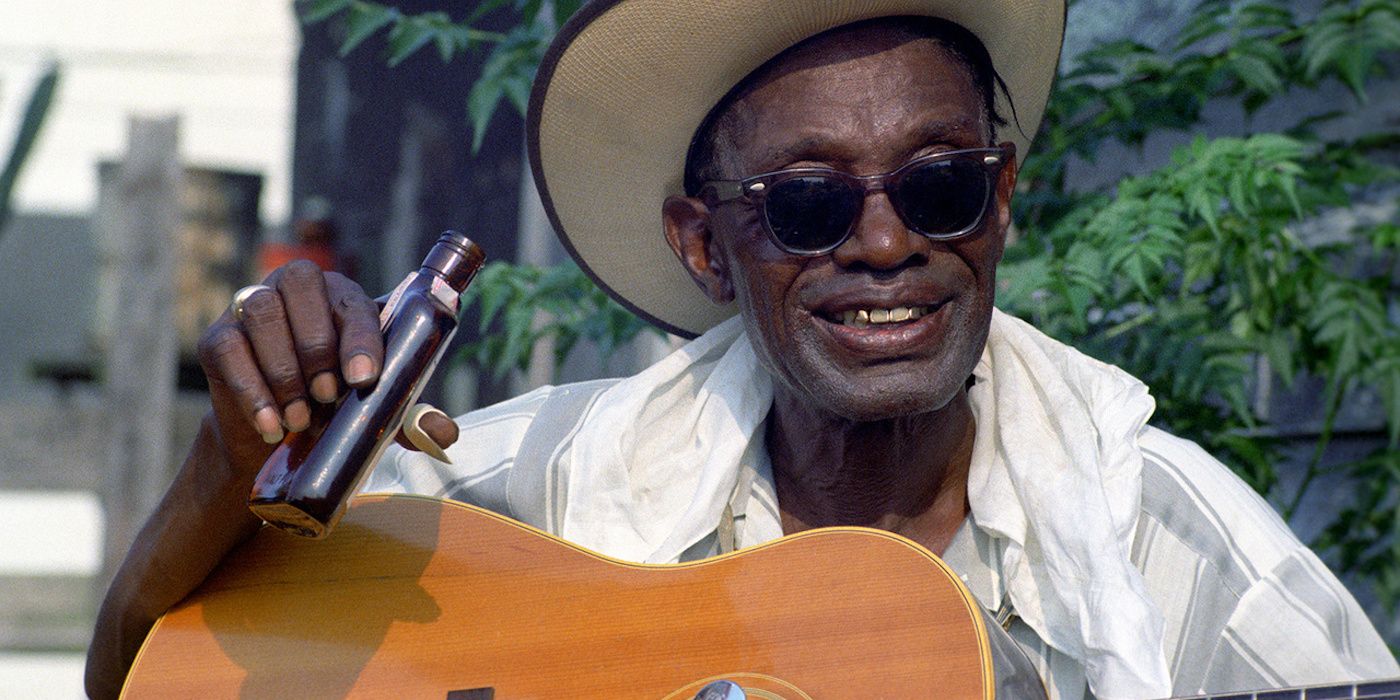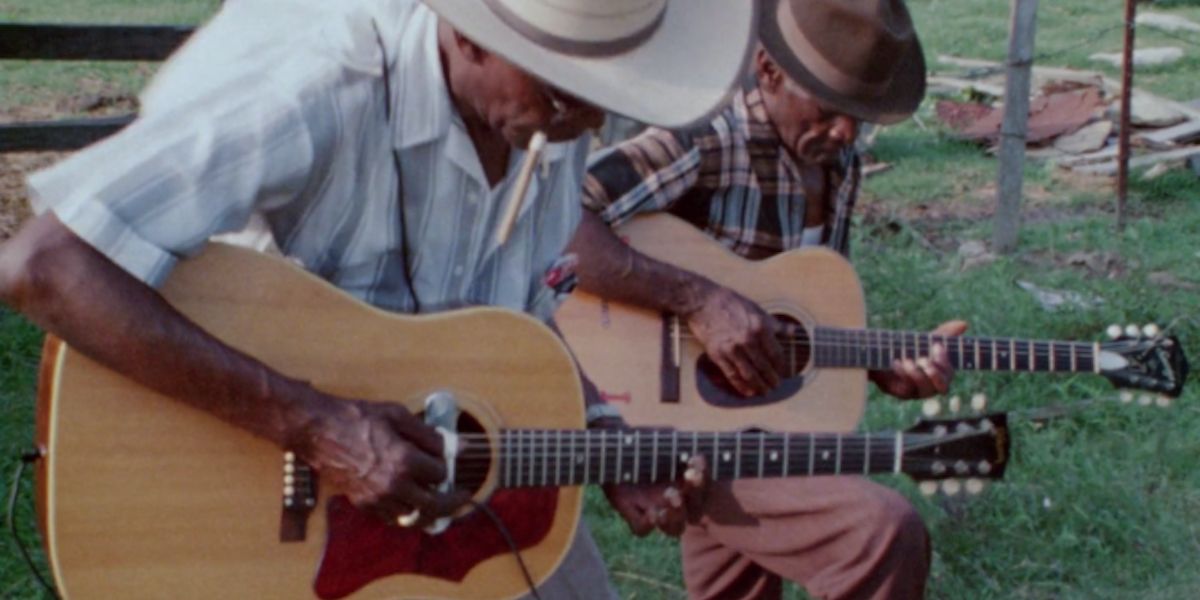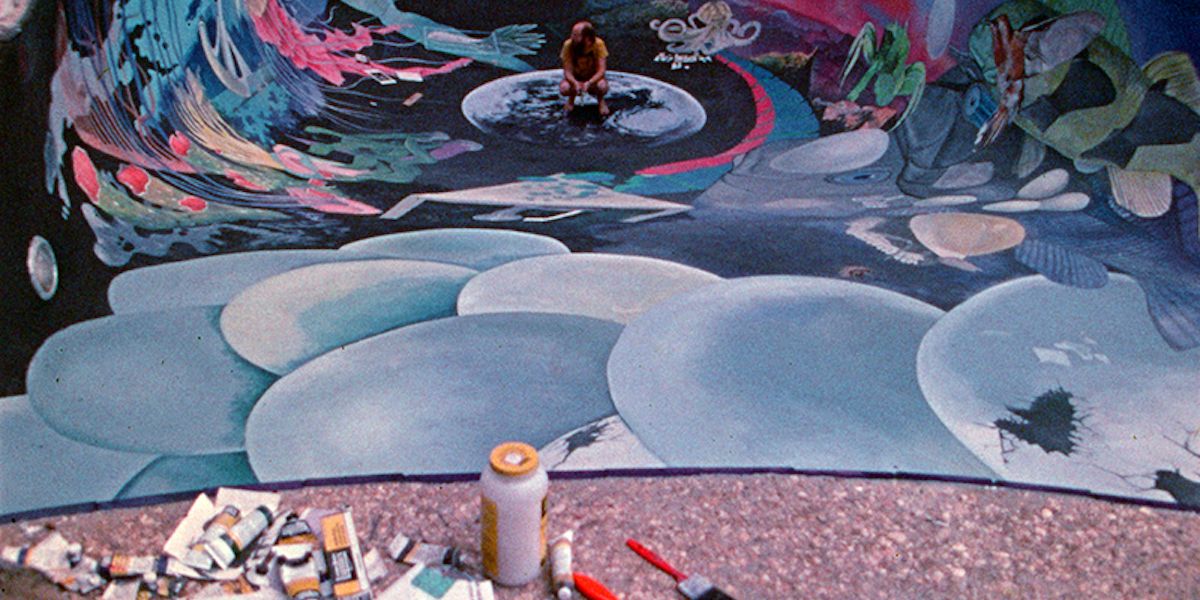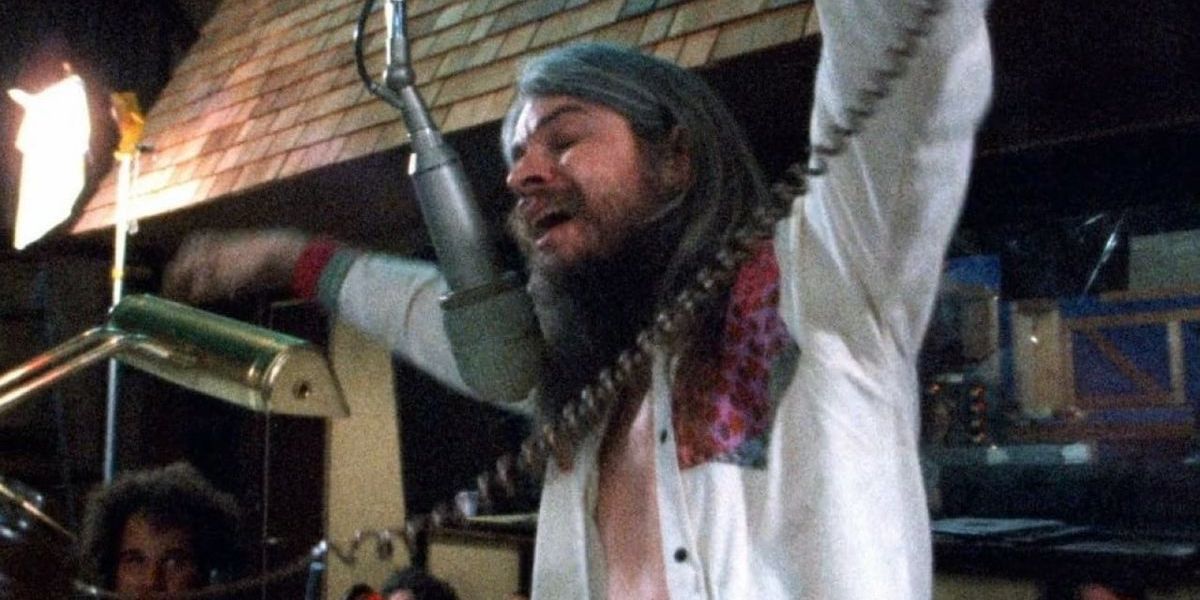From the opening frames of The Blues Accordin’ to Lightnin’ Hopkins, Les Blank establishes a distinct improvisational style of documentary filmmaking, transforming typical cinematic observation into a celebratory engagement with his onscreen subjects. By interpreting documentary cinema as akin to the agriculturally inspired “gleaning” exhibited in Agnès Varda’s The Gleaners and I (2000), the poetic documentaries of Les Blank function as forerunners in a stylistic approach towards the regional characteristics of fringe communities and marginalized artistic subjects. They reframe filmmaking as an act of empathetic harvesting rather than mere image creation.
Blank’s The Blues Accordin’ to Lightnin’ Hopkins serves as both a nuanced portrait of the titular Texas musician and a celebratory vision of Black life and art through sequences of rodeos, churchyard gatherings, and musical performances. Similarly, Blank’s feature length music documentary A Poem is a Naked Person resists biographical didacticism in its approach to illustrating the daily artistic life of Leon Russell, using naturalistic footage of mundane tasks and musical performances to fill out the textures of the film’s folk singing subject. Rather than succumbing to the typical zooming out from the central subjects in many non-fiction films, Blank’s gleaning allows the audience to zoom in to the vibrant intricacies of self-expression and self-representation, crafting an equally empathetic and energetic documentary portrait through effortless observation.
In the midst of the first performance by the titular musician in The Blues Accordin’ to Lightnin’ Hopkins, Blank introduces the audience to the rural locales and diverse Texans that surround the central figure, crafting the footage as an inclusive portrait of Zydeco blues music and Black Southern life in the 1970s. Although The Blues Accordin’ to Lightnin’ Hopkins seems at first to be a film about a singular figure, Blank includes impressionistic footage of a large family wandering down a Texas backroad, featuring a handwritten title card announcing the documentary’s focus on “The People of Texas 1967,” which opens up the film as a more universal observation of an individualized cultural space. Similarly, the film showcases the smiling faces of several children alongside footage of ducklings and chickens, which places the collective community within both the physical space of the rural setting and the reflexive artistic space of Hopkins’s music through the curated footage. Rather than including the community in b-roll outside of the blues performance by Hopkins and the other musicians, the film places equal focus on the collective community by layering images of various people throughout Hopkins’s performance.
Beyond the musical performances at the center of the film, the rodeo sequence at the film’s midpoint expands Blank’s approach to collective storytelling by promoting a joyous cultural event that helped define Hopkins’s Texas town. Rather than utilizing the footage of the rodeo as a tool for exotifying the individuals on-screen, Blank captures the events and the crowds as if he were observing them in momentary glances, emphasizing the empathetic liveliness gleaned from the cattle shows and Zydeco jam sessions. Blank begins the scene with a quick montage of cowboys in action, revealing the resilience of the cattle ropers and rodeo riders. By layering Lightnin’ Hopkins’s propulsive guitar and harmonica as soundtrack over the footage, the rodeo demonstrates the wonder of the specific Texas community within the intimate artistic portrait of Lightnin’ Hopkins. In a meaningful moment in the midst of the sequence, the film highlights Lightnin’ Hopkins laughing joyfully at the rodeo festivities while his friends dance beside a rodeo corral, solidifying the film’s enthusiasm towards the joys of daily life and personal expression through Blank’s gleaned footage.
Expanding beyond the short-form meditation on Lightnin Hopkins’s community-centric life and underrated legacy as a blues legend, Blank’s A Poem is A Naked Person serves as a feature length meditation on being almost famous, capturing Leon Russell’s work as both a faithful studio musician and a multimedia solo artist. From Russell’s improvisatory performance of “Jambalaya” to his vibrant cover of The Staple Singers’ “I’ll Take You There” with The Shelter People, Blank anchors every moment of joyous performance within frenetic montages of dance-focused crowd shots and establishing images of concert venue murals. Rather than centering Russell as the film’s focus through lionizing images of performative prowess, A Poem is A Naked Person gleans music glory through the central figure’s connections with his fans and collaborators. In one of the film’s most arresting asides, both Blank and Russell shift focus to an uninterrupted long take of George Jones performing an acoustic rendition of “Take Me,” emphasizing the Blank’s desire to connect the dots between the country music tradition and Russell’s blues-infused Southern rock.
While The Blues Accordin’ to Lightnin’ Hopkins dabbles into a more poetic manifestation of documentary cinema through Blank’s inspired b-roll, the director’s gleaned footage of local artistic eccentricity, culminating in the creation of a swimming pool mural, broadens the scope of Blank’s documentary character study of Russell to highlight the importance of community in creating the individual. By overlapping extended interview sequences and performance recordings of Leon Russell onto extended shots of Jim Franklin painting an elaborate mural in his swimming pool, Les Blank poetically equates the formation of Russell’s identity within his community to the juxtaposed images that adorn Franklin’s swimming pool. Fixating on the fluidity of nature as well as the colorful kaleidoscope of psychedelic aesthetics, Franklin’s swimming pool mural encapsulates an imaginative interpretation of a personal connection with universal nature and specific culture. Blank’s fixation on the swimming pool in relation to Russell’s story highlights the importance of collective identity in the formation of self-expression, rendering the mural as a metaphor for Blank’s celebration of the link between a person’s life and their artistic output.
Through techniques of empathetic observation and naturalistic storytelling, Les Blank’s expert music documentaries powerfully portray the lives of two unsung heroes of the music world by weaving them within the diverse fabric of their larger community. Through expertly curated sequences of cultural events and musical performance similar to gleaning and harvesting a freshly budding field, Blank transcends many of the problems concerning misrepresentation by centering the cinematic stories on meaningful moments of personal expression. Blank’s thoughtful approach prioritizes the personhood of the individuals onscreen by celebrating their sociocultural individuality and unique artistic output, transforming the director’s role from a passive observer to an active participant with his on-screen subjects. Above all else, both The Blues Accordin’ to Lightnin’ Hopkins and A Poem is A Naked Person beautifully preserve the communal spirit and passionate performances of two of the twentieth century’s most essential yet underrated musical artists.




